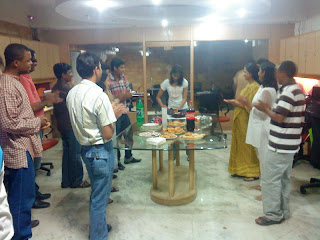While the world’s managers and venture capitalists have lost faith in the “garage model” of business, I am still a firm believer that the best innovations come from individual efforts and not concentrated directional movement in large organizations. Today, was yet another day in the field showing how homebrew software has innovations that many large software suites lack.
Just to give a background on what I’m talking about - a product that I’ve been working on lately is a patient-tracking system for the National Leprosy Eradication Programme. Since DHIS2 is the widely deployed HMIS application in India and aggregated reports for the Government of India are generated through DHIS2, we needed some kind of patient-tracking, yet required aggregate numbers of these patients through DHIS2. For this purpose, the most ideal way we found out was using OpenMRS for the patient-tracking and then generating reports through DHIS2. Thus, we are able to create rich and generic medical records of a leprosy patient, which can later be used not just for leprosy patient care, but future medical treatment of the person for any other disease or health service provisioning.
But today when I arrived to demonstrate this system in Maharashtra State Health Society, I was pleasantly surprised to see a homebrew application. We finished our presentation on the system, demonstrated the application, decided upon pilot process, future meetings and the whole process before we can go live with the system state-wide. Just after we finished our stuff, one of the leprosy health officers told us that he had privately worked on something that was suited for the NLEP program. Most people just ignored his comment, but I was eager to see what he had developed.
And when I saw his application, I was very much stunned. A really nice and intuitive user-interface using Adobe Flex, neat use of data using good-looking reporting and visualization tools, basic reports using excel sheets and a neat-little data model, similar to the ideas in OpenMRS. Maybe the data-model is not suited to a medical records system like OpenMRS, but it very well met the requirements. From what I learnt, it was developed in about a month’s time by one developer, who happens to be the son of this medical officer.
“Commendable effort and nice design decisions”, is what I complemented the medical officer. But what got etched in my mind is that, some best software are written in “that car garage” on a single computer.


